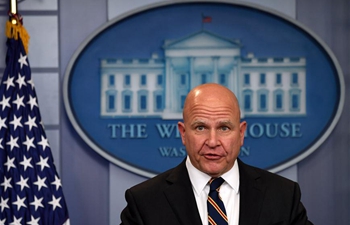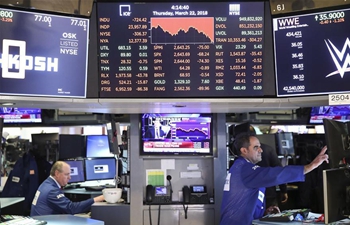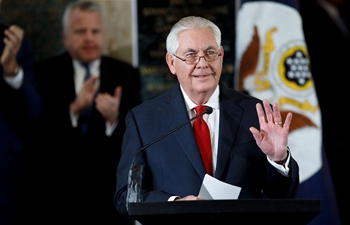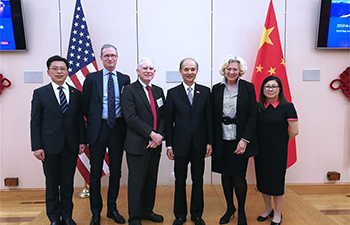NEW YORK, March 23 (Xinhua) -- New York-based Bloomberg LP announced Friday that it will add Chinese RMB-denominated government and policy bank securities to the Bloomberg Barclays Global Aggregate Index.
When fully added to the Global Aggregate Index, local currency Chinese bonds will be the fourth largest currency component following the U.S. dollar, euro and yen.
Using data as of Jan. 31, 2018, the index would include 386 Chinese securities, representing 5.49 percent of the 53.73-trillion-U.S.-dollar index.
"Today's announcement recognizes China's continued efforts over recent years to enhance access to the world's third-largest bond market," Michael Bloomberg, founder of Bloomberg LP and chair of the Working Group on U.S. RMB Trading and Clearing, said in the statement.
"It is a testament to China's firm commitment to financial reforms and the pace of change taking place in its bond market, and another important step for China's integration with global financial markets," he said.
To be considered for inclusion in the Global Aggregate Index, a local currency debt market must be classified as investment grade and its currency must be freely tradable, convertible, hedgeable, and free of capital controls.
Ongoing enhancements by the People's Bank of China have resulted in RMB-denominated securities meeting these absolute index rules.
"Bloomberg's inclusion of RMB-denominated bonds in the most widely-used fixed income benchmarks represents a pivotal development for investors around the world," Henry M. Paulson, co-chair of the Working Group on U.S. RMB Trading and Clearing, said. "China's new position in international bond portfolios will pave the way for robust market activity and support continued financial reforms."
In addition to the Global Aggregate Index, Chinese RMB-denominated debt will be eligible for inclusion in the Global Treasury and EM Local Currency Government Indices starting April 2019.
The inclusion of the Chinese market in the Global Aggregate, Global Treasury, and EM Local Currency Government Indices will be done over a 20-month period, starting in April 2019, with a scaling factor of 5 percent and increasing 5 percent each month.
However, additional enhancements are required prior to the planned inclusion date to increase investor confidence and improve market accessibility.













